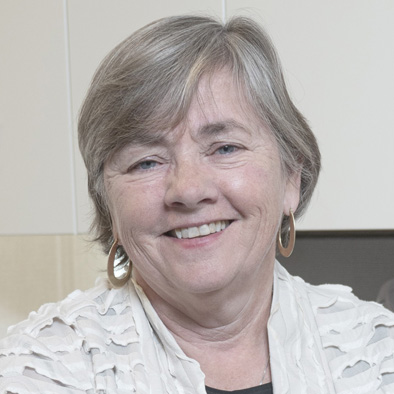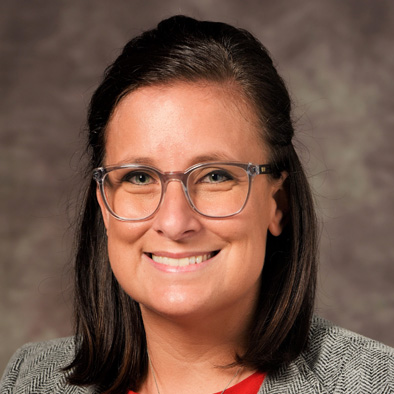Equity in Access Research Grants
The Leukemia & Lymphoma Society’s (LLS) Equity in Access Research Program was created to help ensure more equitable access to care for blood cancer patients and survivors.
Through this program, LLS aims to generate new evidence that can guide policy reform and changes in healthcare practice, in order to mitigate the impact of social, economic and environmental disadvantages and reduce barriers to care. Learn about our 2024 Equity in Access Research Program grantees and their research following this year’s application information.
Click Here to See Our Active Equity in Access PortfolioApplications are now open for the Equity in Access Research Program!
Letters of Intent are due by September 11, 2025 at 3pm ET
LLS invites Letters of Intent for the Equity in Access Research Program under the Request for Proposals:
Informed by a scoping review of the literature, the purpose of this Request for Proposals (RFP) is to fund research studies that will increase our understanding of effective interventions for increasing accrual to therapeutic cancer clinical trials, particularly among underrepresented populations. Specifically, we seek proposals that will implement and evaluate interventions designed to a) mitigate multilevel barriers to therapeutic clinical trial accrual for underrepresented groups and b) quantitatively measure the impact of these interventions on patient accrual. We are particularly interested in proposals that address systemic, institutional, and clinician-related barriers that impede clinical trial participation.
Join us for our upcoming webinar on June 18th, 2025 from 12pm-1pm ET, where we'll explore key topics related to this year's RFP. Register now to secure your spot!
REGISTER HERESee below for Key Dates, as well links to the Request for Proposals, Application Guidelines, and Application Templates.
Key Dates and Deadlines:
| Webinar for prospective applicants | June 18, 2025 (12PM ET) | |
|---|---|---|
| Deadline to submit Letters of Intent | September 11, 2025 (3PM ET) | |
| LLS notifies applicants whether they are invited to submit full proposal | October 31, 2025 | |
| Deadline for receipt of full proposals (invited applicants) | January 29, 2026 (3PM ET) | |
| Notification of awards | April/May 2026 | |
| Grant start date | July 1, 2026 | |
For questions about this RFP and the application process, please contact researchprograms@lls.org.
Click below to access our detailed RFP and Letter of Intent (LOI) instructions:
REQUEST FOR PROPOSALS/LETTER OF INTENTFor applicants invited to submit a full proposal, click below for guidelines and instructions to ensure your submission meets all of our requirements:
FULL APPLICATION GUIDELINES AND INSTRUCTIONSClick below for downloadable templates for submission of invited full proposals:
APPLICATION TEMPLATESMEET THE 2024 EQUITY IN ACCESS RESEARCH PROGRAM GRANTEES
LLS recently awarded nearly $7.1M in funding under two Requests for Proposals: a) five-year research grants designed to build evidence for effective interventions to increase therapeutic cancer clinical trial accrual, particularly among underrepresented groups and b) three-year research grants exploring the relationship between health insurance and equity in access to care for blood cancer patients and survivors.
Building Evidence for Effective Interventions to Increase Therapeutic Cancer Clinical Trial Accrual: Promoting Access for Patients from Underrepresented Groups

Carma Bylund, PhD
Principal Investigator
Professor and Associate Chair of Education, Department of Health Outcomes and Biomedical Informatics; University of Florida

Stephanie Staras, PhD, MPH
Co-Principal Investigator
Associate Professor, Department of Health Outcomes and Biomedical Informatics; Associate Director, Institute for Child Health Policy; Director of Precision Public Health, Center for Translational Science Institute; University of Florida
Enhancing Connection and Communication with Community-Based Oncology Practices to Improve Cancer Clinical Trial Recruitment: The ECCO Study
Attaining the full benefit of cancer research requires clinical trial participation by patients representing the diversity of the U.S. population. Yet, trial accrual is low, at about 5-8% of cancer patients, with participation by members of underrepresented populations (e.g., those who live in rural areas, racial/ethnic minoritized groups, and older adults) even lower. One of many barriers to clinical trial accrual is a lack of connection between community oncology practices, where most cancer patients receive treatment, and academic cancer centers where most trials are offered and that have support for research activities and patient recruitment. In collaboration with 10 community-based oncology practice sites, this study will implement a multi-level intervention trial to test the effectiveness of two community oncology strategies designed to increase trial accrual. The first strategy, Enhanced Connection, will focus on enhancing the relationship between community oncologists and Principal Investigators of relevant trials and reducing barriers to referral. The second strategy, Enhanced Communication, will include an interactive online training focused on improving community oncologists’ knowledge and attitudes about trials, as well as their ability to discuss clinical trials with their patients.
Aims:
Aim 1: Evaluate the overall effectiveness of the Enhanced Connection strategy on cancer treatment clinical trial accrual.
Aim 2: Evaluate the additional effectiveness of the Enhanced Communication strategy on cancer treatment clinical trial accrual.
Aim 3: Examine the effectiveness of both strategies on cancer treatment clinical trial accrual for underrepresented groups.
Study Design: This study will use a supplemental stepped-wedge design to evaluate the effectiveness of the Enhanced Connection strategy (Aim 1), the additional effectiveness of the Enhanced Communication strategy (Aim 2), and the effectiveness of both strategies on accrual of underrepresented populations (Aim 3). The 10 selected community oncology sites will be randomized into two groups (5 per group) receiving both intervention strategies in chronological order. The design will include four periods: (1) both groups will enter baseline preparation stage before the intervention strategies begin (Year 1); (2) the first group will start to receive Enhanced Connection, and the second group stays at preparation stage (Year 2); (3) the first group will have Enhanced Communication on top of Enhanced Connection, and the second group will start to receive Enhanced Connection (Year 3); (4) all sites will have Enhanced Communication and Enhanced Connection (Year 4).
Significance: This study has the potential to provide evidence for cancer centers to integrate these practices into their standard research operations and to support the continued training of community oncologists.

Shazia Nakhoda, MD
Principal Investigator
Assistant Professor, Department of Hematology/Oncology; Fox Chase Cancer Center

Linda Fleisher, PhD, MPH
Co-Principal Investigator
Research Professor; Founder, Office of Community Outreach; Fox Chase Cancer Center

Zachary Frosch, MD, MS
Co-Principal Investigator
Assistant Professor, Department of Hematology/Oncology, Fox Chase Cancer Center, and Department of Health Services Administration and Policy, Temple College of Public Health
RECONNECT: Overcoming Racial and Ethnic Inequity in Clinical Trial Enrollment via Clinical Trial Nurse Navigation and Provider Communication Training
Patients from groups historically underrepresented in cancer clinical trials (e.g., racial/ethnic minoritized groups, older adults) are disproportionately impacted by social, economic, and environmental disadvantage, which affects their ability to access promising novel therapies through enrollment in a clinical trial. Effective interventions, screening, and enrollment practices are essential in reducing and ultimately eliminating disparities in trial accrual, and multi-level interventions are required to address these disparities. This study will implement a skill-based didactic course (SBDC) for providers to improve the quality of communication around structural racism, mistrust, implicit biases, and clinical trial counseling. This study will also implement a culturally competent, specialized clinical trials nurse navigation program that connects patients to educational resources around clinical trials and standardizes pre-screening for new patients prior to the initial clinic visit.
Aims:
Aim 1: Determine the effect of a stakeholder guided, evidence-based didactic and participatory course for clinicians and clinical investigators on the proportion of patients from historically underrepresented groups (HUGS) who are enrolled on a clinical trial.
Aim 2: Determine the effect of implementing a specialized bilingual and culturally competent clinical trials nurse navigation program (CTNN) program on the proportion of patients from HUGS enrolled on a clinical trial.
Aim 3: Determine the effect of a multi-level intervention combining the SBDC and CTNN program on the proportion of patients from HUGS who are enrolled on clinical trial.
Study Design: In intervention #1, providers will be randomized by primary disease service line (e.g., breast cancer, hematologic malignancies) to the SBDC or control group. The SBDC will consist of a three-module program over six months using a combination of asynchronous self-guided online training and small group skill-building sessions to foster culturally competent discussions of racism and socio-economic barriers to clinical trials. In intervention #2, all patients referred for a new patient evaluation appointment will be eligible for 1:1 randomization to 1) receipt of standard clinical services only or 2) the receipt of navigation by a CTNN in addition to standard services. The CTNN program would provide patients with an introductory conversation around clinical trials, discuss concerns about clinical trials, provide access to the mychoiceTM program, and pre-screen for clinical trials using a routinely updated online web tool.
Significance: This study has the potential to generate evidence on the effectiveness of a skill-based communication training that empowers providers to navigate discussions on clinical trials more openly and effectively with patients from underrepresented groups and a dedicated CTNN program that implements early pre-screening for eligibility and validated patient education tools on trial accrual.
Understanding How Health Insurance Affects Equity in Access to Care for Patients with and Survivors of Blood Cancer

Raymond Mailhot, MD, MPH
Principal Investigator
Clinical Associate Professor, Department of Radiation Oncology; Director, Hematologic Radiotherapy Program; University of Florida

Erin Mobley, PhD, MPH
Co-Principal Investigator
Assistant Professor, Department of Surgery; University of Florida College of Medicine in Jacksonville
Insurance Inequities in Hodgkin Lymphoma Treatment and Survivorship in the Southeast
Despite Hodgkin lymphoma’s (HL) favorable prognosis, Black and Hispanic patients have worse survival rates compared to White patients. Insurance status and non-White race and ethnicity are associated with the inequitable receipt of optimal treatments, as well as survivorship care. Patients’ decision-making experiences with their clinicians influence cancer care, and shared decision-making (SDM) is central to patient-centered care when patients have multiple treatment options. However, in hematologic cancer care, many physicians underestimate patient preference for SDM, and HL survivors report minimal involvement in decision-making about their treatment and care.
Aims:
Aim 1: Examine differences in the receipt and quality of HL treatment for initial diagnosis and relapse by insurance type.
Aim 2: Examine the receipt and quality of survivorship care by insurance type.
Aim 3: Characterize diverse patients’ treatment decision-making experiences in initial, relapse, and survivorship care by insurance type.
Study Design: This mixed methods study will use an approach informed by the National Institute on Minority Health and Health Disparities Research Framework and an adapted version of Andersen’s Behavioral Model as the overarching theory, combined with PROGRESS-Plus to create a comprehensive list of critical factors at each age group associated with variation in treatment and survivorship in Black and Hispanic HL patients. This study will bring together quantitative (OneFlorida+ database) and qualitative information to understand how insurance status and type are associated with treatment (Aim 1), survivorship care (Aim 2), and patients’/families’ experiences of shared decision-making across the care continuum by insurance type (Aim 3).
Policy Significance: By leveraging OneFlorida+, which represents individuals from states that have not adopted Medicaid expansion, coupled with national representation from the qualitative data, findings from this study can be used to inform the development of tailored, personalized approaches to HL treatment and survivorship care and advocate for expanding Medicaid coverage.

H. Irene Su, MD
Principal Investigator
Professor, Obstetrics, Gynecology and Reproductive Sciences; Director, Oncofertility Program; University of California, San Diego
Impact of State Health Insurance Mandates on Affordability and Utilization of Fertility Preservation in Adolescent and Young Adults with Blood Cancers
Adolescents and young adults (AYAs) diagnosed with a blood cancer are at risk of infertility resulting from their cancer treatment. Fertility preservation (FP) services before cancer treatment are evidence-based practices that effectively decrease infertility; however, FP costs are high, and these services are typically not covered by insurance, contributing to low utilization. One policy solution to increase access is legally mandating that insurance carriers provide coverage for these services. Since 2017, 16 states and the District of Columbia have passed FP benefit mandate legislation. There is a gap in knowledge on how much these mandates effectively improve the use of FP services and reduce financial burden.
Aims:
Aim 1: Assess the affordability of FP services for AYAs who are newly diagnosed with blood cancers.
- Aim 1a. Estimate out-of-pocket costs, in-network care, co-insurance rates, and coverage gaps for FP services.
- Aim 1b. Compare in-network care and co-insurance rates for FP services with cancer services.
Aim 2: Estimate the association between state-level FP benefit mandates and the utilization and affordability of FP services covered by insurance.
Aim 3: Assess policy-based determinants of utilization and affordability of FP services covered by insurance in states with benefit mandates.
Study Design: This study will use the Health Care Cost Institute’s multi-payer commercial claims dataset to identify a cohort of AYAs newly diagnosed with a blood cancer ages 15 to 39 during 2012-2022. Outcomes of standard FP services utilization prior to cancer treatment (oocyte, sperm, embryo, tissue cryopreservation) and affordability (cost-sharing, coverage gaps, in-network utilization) will be assessed. To test if FP is covered at parity with other cancer care, this study will compare cost-sharing and network adequacy between FP and cancer services. The association between state-level (i.e., mandate and mandate characteristics) and patient-level (e.g., demographic, geographic, insurance product) determinants and outcomes will also be estimated.
Policy Significance: Findings from this study will help policymakers consider, design, and refine current and future FP mandates and regulations, as well as support advocacy efforts and provide feedback to insurers and oncology and fertility teams.

Anushree Vichare, PhD, MBBS
Principal Investigator
Assistant Professor, Health Policy and Management, Milken Institute School of Public Health; George Washington University

Clese Erikson, M.P.Aff
Co-Principal Investigator
Deputy Director and Lead Research Scientist, Mullan Institute for Health Workforce; George Washington University

Qian “Eric” Luo, PhD
Co-Principal Investigator
Assistant Research Professor, Milken Institute School of Public Health; George Washington University
Addressing Inequities in Access to Care for Patients with Hematologic Malignancy: Understanding the Impact of Telehealth Policies in Medicaid
Existing inequities in access to cancer care, particularly among groups vulnerable to disparities (e.g., low-income individuals, racial/ethnic minoritized groups, those living in rural areas), may be exacerbated due to growing demand for oncologic care along with predicted shortages in the oncology workforce. Evidence suggests that telehealth can be an innovative and effective model to improve access to care for patients with a blood cancer. However, the extent of telehealth utilization by Medicaid beneficiaries with a blood cancer remains unknown. Further, variations in state Medicaid telehealth coverage and payment policies may affect the provision of telehealth services by hematology oncologists, but this question remains unexplored.
Aims:
Aim 1: Identify the specialist workforce treating Medicaid beneficiaries with hematologic malignancies and use of telehealth for patient care through the public health emergency.
Aim 2: Explore whether Medicaid beneficiaries with hematologic malignancies who used telehealth have different health care utilization compared to those without telehealth visits.
Aim 3: Investigate the association between telehealth payment parity policies and use of telehealth services by the specialist workforce treating Medicaid beneficiaries with hematologic malignancies.
Aim 4: Assess racial/ethnic and geographic inequities in access to telehealth for Medicaid beneficiaries with hematologic malignancy.
Study Design: This study will implement an observational study design using the newly available national-level Medicaid claims data over an 8-year period (2016-2023) linked longitudinally to obtain detailed information on Medicaid beneficiaries’ healthcare utilization. Telehealth provision by the “specialists” to Medicaid patients with hematologic malignancies will be observed, with a specific focus on identifying differences in telehealth uptake among vulnerable populations such as racial/ethnic minoritized and rural patients. This study will also examine how recent legislative changes in telehealth coverage and payments under Medicaid impact access to telehealth.
Policy Significance: By including patients covered by Medicaid, the findings from this study will provide first-known estimates on patterns of telehealth utilization by these patients and inform strategies to improve telehealth access through policy reforms.
Support for this program provided by:

